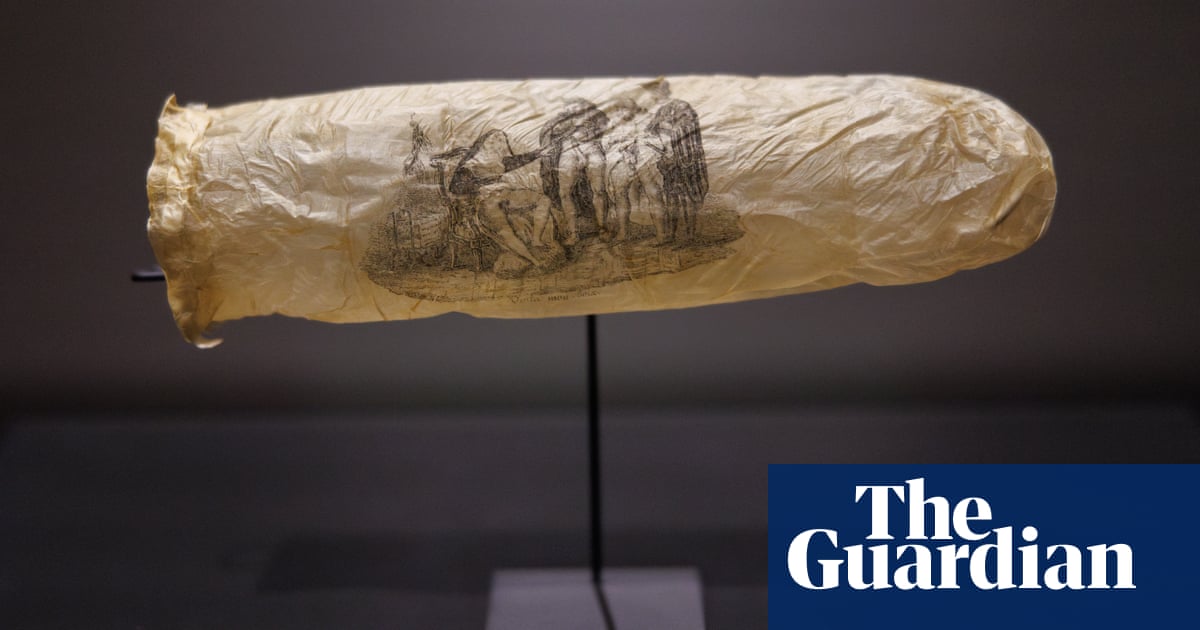A 200-year-old illustrated condom will go on display with Dutch golden age masters in Amsterdam this week, after the 19th-century “luxury souvenir” became the first-ever contraceptive sheath to be added to the Rijksmuseum’s art collection.
The condom, which was probably made of a sheep’s appendix circa 1830, is thought to have come from an upmarket brothel in France, most likely in Paris. It features an erotic etching depicting a partially undressed nun pointing at the erect genitals of three clergymen, as well as the phraseVoila, mon choix(“There, that’s my choice”).
The Rijksmuseum curator Joyce Zelen said the composition of the etching deliberately alluded to the Greek myth of the Judgement of Paris, in which a Trojan prince is asked to pick the most beautiful of three goddesses. “So we believe that whoever acquired the condom would have been fairly sophisticated and well educated,” she said.
Bought for €1,000 at an auction in Haarlem last November, the contraceptive has gone on display in a glass case this week as the centrepiece of a small exhibition at the Rijksmuseum called SafeSex?, featuring Dutch and French prints and drawings on the themes of sex work and sexual health.
Before the invention of vulcanised rubber in 1839 made them safer and more widely available, condoms were made from linen, animal membranes or even turtle shells – and did little to provide protection from sexually transmitted diseases such as syphilis or to prevent pregnancy.
“In the 1830s, when this condom was made, the use of condoms was still frowned upon, especially by the church,” said Zelen. “They were mostly sold under the counter at brothels or barber shops, though there are some reports of luxury shops offering bespoke tailoring.”
Like all effective advertising, the promotional souvenir displayed in Amsterdam managed to flatter its consumer, measuring 20cm in length. “We looked at it with UV light and suspect it was never actually used,” Zelen clarified.
“It’s also unclear whether the nun in the etching is pointing at the bald man, the thin man, or the one who looks slightly overweight,” Zelden said. “That way, any type of man could feel spoken to.”
